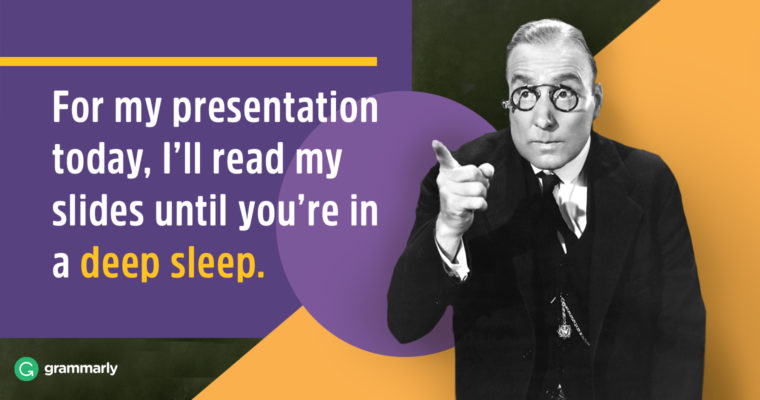
Any writer who’s spent time in the trenches publishing articles online knows it’s hard to keep a reader’s attention. In fact, according to Tony Haile’s article on Time.com, 55 percent of readers will spend fifteen seconds or less actively on a page reading the article that took you many times longer to write and carefully proofread. Like it or not, our online culture, which blasts us with a never-ending stream of content 24/7, has made us skimmers rather than deep readers.
What’s a content creator to do? You could keep your content short, but there’s evidence that longer pieces get more social engagement and links. The key to writing articles that hold a reader’s attention is not to make them shorter but to make them more readable, and doing so requires expert organization that calls attention to key topics. There’s arguably no more useful organizational tool than the venerable bullet point.
How to write powerful bullet points
According to Copyblogger, “the essence of a great bullet is brevity + promise.” By using bullets, you’re demonstrating that you know how to be concise and cut to the chase. Then, you must deliver on that promise by making every point essential and impactful. Let’s demonstrate the power of bullet points with a list of tips for writing awesome ones:
- Think of a bullet point as a mini headline. It needs to be concise and attention-grabbing in a way that intrigues readers and compels them to read more.
- Highlight elements key to understanding the content of your article. There’s no room for fluff here, so call out what’s most important.
- Keep it simple. Avoid complex outlines and don’t use sub-bullets if you can help it.
- Keep bullets thematically related. Bullet points highlight key elements of very specific topics, so stay on a single track.
- Make your bullet points symmetrical . . . just like the ones here. Notice how each point begins with a bolded directive and ends with a one-sentence explanation.
- Work in keywords. Search engines tend to give bulleted lists a little more weight.
- Don’t overdo it. You want your post to look like an article, not a grocery list.
What is a fascination?
A fascination is a copywriting technique for creating points that make your readers so intrigued (fascinated!) that they’re compelled to get more info. It’s a go-to marketing tactic you’ve no doubt seen in advertising. Let’s invent a make-believe product to show you how fascinations work.
The Amazing Party Animal Personality Enhancer!
Use this simple device during any social event and you’re virtually guaranteed to
- develop killer dance moves
- become the most entertaining person in the room
- attract 180 percent more attention from potential love interests
- increase your notoriety in your social circles by 83 percent
Okay, so this “personality enhancer” sounds too good to be true (or suspiciously like your favorite party beverage), but the points are compelling. Who doesn’t want to become an entertaining, attractive, well-known dancing machine?
The same technique can work well when you’re trying to get readers to spend more than fifteen seconds looking at your post. If it fits the tone of your article, frontload it with bulleted items that make compelling promises. You’re telling visitors that, if they take the time to read this article, they’ll get to know more about the fascinating topics you highlighted.
Grammar basics of using bullet points
Bullet points often create confusion for writers. Do you capitalize each one? Put periods at the end? When should you use numbers instead of bullets? It turns out that making your articles easy to read through the strategic use of bullet points requires a little know-how. Here are a few guidelines.
The introductory sentence
If the text introducing your list is a complete sentence, it should end with a colon. If it’s a fragment, forget the colon and jump straight into the list.
Numbers or bullets?
If your action items need to take place in a specific order, use a numbered list rather than bullets.
EXAMPLE:
Here’s how to give your dog a bath:
1 Place a shower cap on your dog’s head.
2 Give him his rubber ducky to provide emotional security.
3 Gently bathe your dog. Avoid getting water in his big sad eyes.
You could also use a numbered list if your introductory text promises a certain number of items, like the three best reasons to bathe your dog. (But do you really need reasons?)
How to use punctuation with bullet points
If the text of your bullet point is a complete sentence (or multiple sentences), use capital letters and punctuation. If your points are not structured as proper sentences, you don’t need to end with punctuation. Capitalization is a style choice—with sentence fragments, you can choose to start each with either upper- or lower-case letters.
Bullet point structure
Don’t mix and match sentence structures. Your points should be consistent, either all sentences or all fragments.
Make sure the grammatical structure of your bullet points is parallel by starting each with the same part of speech. For instance, if you start one point with an adjective, start them all with an adjective.
CORRECT:
Adopting a dog will make you
- popular with dog lovers
- famous for having the most adorable pet on your block
INCORRECT:
Adopting a dog will make you
- popular with dog lovers
- you’ll be famous for having the most adorable pet on your block
Using the correct example above, you would read:
“Adopting a dog will make you popular with dog lovers.”
But the incorrect example makes no sense as a sentence, so you know you need to edit:
“Adopting a dog will make you you’ll be famous for having the most adorable pet on your block.”
Keep your style consistent
Some of the bullet point style rules aren’t hard and fast. Unless you’re following a specific style guide (such as APA format or Chicago style), use the style that looks best to you, but remember to keep it parallel and keep it consistent, because those things are non-negotiable. With a little precision, you’ll create bullet points that will catch your readers’ attention and keep them on the page so your carefully crafted words earn more than just fifteen seconds of their time.
![]()






